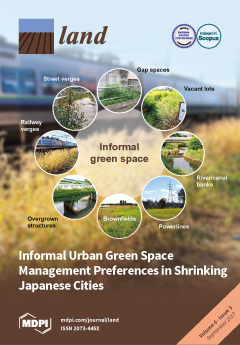Resources
Displaying 1976 - 1980 of 2258Comparing Quantity, Allocation and Configuration Accuracy of Multiple Land Change Models
The growing numbers of land change models makes it difficult to select a model at the beginning of an analysis, and is often arbitrary and at the researcher’s discretion. How to select a model at the beginning of an analysis, when multiple are suitable, represents a critical research gap currently understudied, where trade-offs of choosing one model over another are often unknown. Repeatable methods are needed to conduct cross-model comparisons to understand the trade-offs among models when the same calibration and validation data are used.
Land‐Use and Land‐Cover Change in the Páramo of South‐Central Ecuador, 1979–2014
Land use and land cover were mapped between 3500 and 5000 meters above sea level m.a.s.l. in the Río Chambo basin in south-central Ecuador from Landsat MSS, TM, ETM and OLI imagery acquired between 1979 and 2014. The area mapped has been dominated by páramo and a variety of agricultural land uses since 1979. The main land-use transitions have been from páramo to agriculture, native forest to páramo and agriculture, and agriculture back to páramo.
Fire Data as Proxy for Anthropogenic Landscape Change in the Yucatán
Fire is one of the earliest and most common tools used by humans to modify the earth surface. Landscapes in the Yucatán Peninsula are composed of a mosaic of old growth subtropical forest, secondary vegetation, grasslands, and agricultural land that represent a well-documented example of anthropogenic intervention, much of which involves the use of fire. This research characterizes land use systems and land cover changes in the Yucatán during the 2000–2010 time period.
Integrating Modelling Approaches for Understanding Telecoupling: Global Food Trade and Local Land Use
The telecoupling framework is an integrated concept that emphasises socioeconomic and environmental interactions between distant places. Viewed through the lens of the telecoupling framework, land use and food consumption are linked across local to global scales by decision-making agents and trade flows. Quantitatively modelling the dynamics of telecoupled systems like this could be achieved using numerous different modelling approaches.
Efficiency of Conservation Agriculture Production Systems for Smallholders in Rain-Fed Uplands of India: A Transformative Approach to Food Security
With challenges from global climate change, it is imperative to enhance food production using climate-smart technologies and maximize farm efficiency. Fifty-six households in Rudhiapada and Badamahulidiha, Odisha, India were selected to evaluate farmers’ efficiency using conservation agriculture (CA) cropping system practices. Data envelopment analysis (DEA) and regression analysis were used to estimate farmer efficiency and the determinants of yield.


